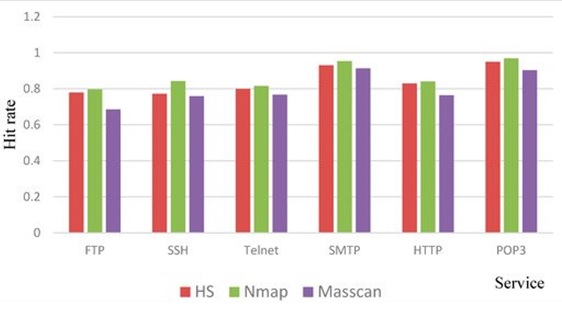Footprinting Using Nmap

DOI:
https://doi.org/10.54060/JIEEE/003.02.004Keywords:
Ethical Hacking, Footprinting, Penetration testing, Vulnerabilities, bugs, Scanning, ReconnaissanceAbstract
Nmap is inbuilt in Kali Linux that is utilized by the organization to identify the weakness and remediate it. There are different sorts of subtleties that Nmap offers in the wake of filtering the objective. The data expressed in the manuscript can be utilized comprehend the idea of what Footprinting is, what hackers search for to Footprint, and how to shield against it. Nmap is a free and open-source utility for network disclosure and security examining. Numerous frameworks and organization heads additionally find it valuable for errands. In this paper, the study is conducted on the utilization of NMAP for the footprinting. The cloudflare server is utilized for the study. The suggestions on are pro-vided to avoid the footprinting. The results of the study will be helpful to avoid the foot-printing.
Downloads
References
N. Antunes and M. Vieira, “Enhancing penetration testing with attack signatures and interface monitoring for the detection of injection vulnerabilities in web services,” in IEEE International Conference on Services Computing, pp. 104-111, July 2011.
P. S. Shinde and S. B. Ardhapurkar, “Cyber security analysis using vulnerability assessment and penetration testing,” in World Conference on Futuristic Trends in Research and Innovation for Social Welfare (Startup Conclave), pp. 1-5, March 2016.
J. Fonseca, M. Vieira, and H. Madeira, “Testing and comparing web vulnerability scanning tools for SQL injection and XSS at-tacks,” in 13th Pacific Rim International Symposium on Dependable Computing (PRDC), pp. 365-372, Dec. 2007.
Y. Stefinko, A. Piskozub, and R. Banakh, “Manual and automated penetration testing. Benefits and drawbacks. Modern tenden-cy,” in 13th International Conference on Modern Problems of Radio Engineering, Telecommunications and Computer Science (TCSET), pp.488-491, Feb. 2016
S. Kumar, R. Mahajan, N. Kumar, et al, “A study on web application security and detecting security vulnerabilities,” in 6th In-ternational Conference on Reliability, Infocom Technologies and Optimization (Trends and Future Directions) (ICRITO) pp. 451-455. Sept. 2017.
Mukesh. M, S. Venkateshkumar, “Ethical Hacking”, International Journal of Trend in Scientific Research and Development (ijtsrd), vol. 3, Iss. 6, pp. 1-2, 2019.
V. Chandrika, “Ethical Hacking: Types of Ethical Hackers”, International Journal of Emerging Technology in Computer Science & Electronics (IJETCSE), vol. 11, Iss. 1, pp. 44-45, 2014.
M. Pangaria, V. Shrivastava, “Need of Ethical Hacking in Online World”, International Journal of Science and Research (IJSR), vol. 2, Iss. 4, pp. 530-531, 2013.
R. Jaiswal, A. Sharma, “Ethical Hacking”, Journal of Xi'an University of Architecture & Technology, vol. 12, Iss. 6, pp. 853-854, 2020.
K.P. Kumar, K. Pranathi,” A Survey on Ethical Hacking, Approaches, Attacks, Procedure & Reliability in case of Cyber Crime”, Journal of Composition Theory, vol. 14, Iss. 6, pp. 100-110, 2021.
U. Singh and P. Singh, “Managing Cyber Security”, J. Manage. Serv. Sci., vol. 2, no. 1, pp. 1–10, 2022. DOI: https://doi.org/10.54060/JMSS/002.01.002.
S. Kumar Tomar and P. Singh, “Cyber Security Methodologies and Attack Management”, J. Manage. Serv. Sci., vol. 1, no. 1, pp. 1–8, 2021. DOI: https://doi.org/10.54060/JMSS/001.01.002
A. Srivastava and P. Singh, “Security Issues in Cloud Computing”, J. Manage. Serv. Sci., vol. 2, no. 1, pp. 1–11, 2022. DOI: https://doi.org/10.54060/JMSS/002.01.003.
F. Abbasi and P. Singh, “Cryptography: Security and Integrity of Data Management”, J. Manage. Serv. Sci., vol. 1, no. 2, pp. 1–9, 2021. DOI: https://doi.org/10.54060/JMSS/001.02.004.
S. Yadav and P. Singh, “Web Application and Penetration Testing”, J. Infor. Electr. Electron. Eng., vol. 1, no. 2, pp. 1–11, 2020. DOI: https://doi.org/10.54060/JIEEE/001.02.003.
M. Singh Saini and S. Rizvi, “Vulnerabilities in Android OS and Security of Android Devices”, J. Infor. Electr. Electron. Eng., vol. 3, no. 1, pp. 1–11, 2022. DOI: https://doi.org/10.54060/JIEEE/003.01.004.
N. Srivastava, U. Kumar, and P. Singh, “Software and Performance Testing Tools”, J. Infor. Electr. Electron. Eng., vol. 2, no. 1, pp. 1–12, 2021. DOI: https://doi.org/10.54060/JIEEE/002.01.001.
H. Khan and P. Singh, “Issues and Challenges of Internet of Things: A Survey”, J. Infor. Electr. Electron. Eng., vol. 2, no. 3, pp. 1–8, 2021. DOI: https://doi.org/10.54060/JIEEE/002.03.002.

Downloads
Published
How to Cite
CITATION COUNT
License
Copyright (c) 2022 Yuvraj Singh, Dr. Pawan Singh, Dr. Garima Sinha

This work is licensed under a Creative Commons Attribution 4.0 International License.

























